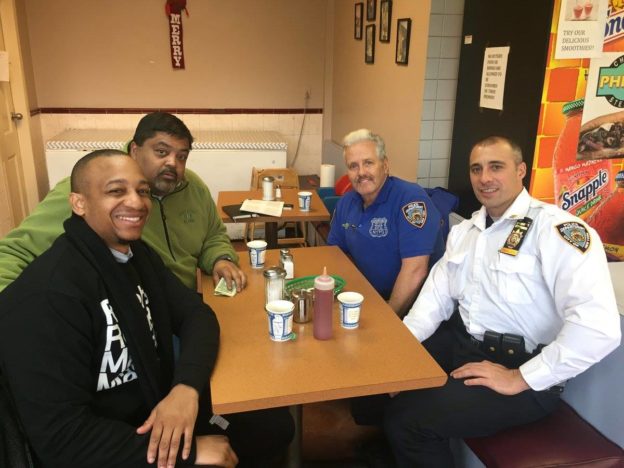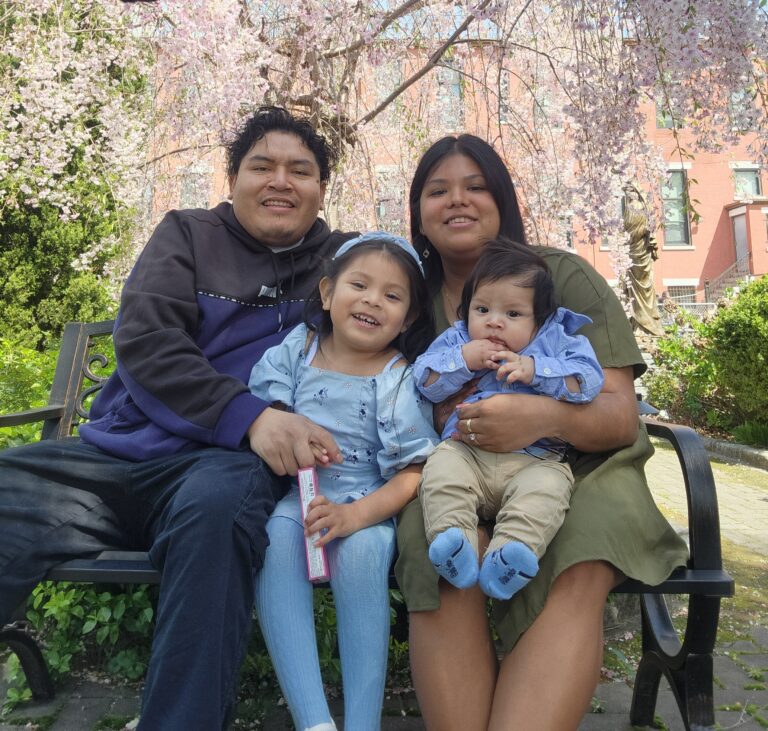By Deep Ghosh
Senior Vice President, External Affairs and Community Engagement

Partners for District 27. Clockwise from back left: Deep Ghosh; Community Affairs PO Kevin Campbell; Commanding Officer of the 101st Precinct in Far Rockaway, Vincent Tavalaro; and Brandon Jeffries.
The Child Center of NY is on a path of self-assessment, taking a serious look at our customers, where and how many there are, how we are doing in delivering services, and most important: Are we making a measurable impact?
These questions are at the root of Results-Based Accountability and the Annie E. Casey Foundation’s Fellowship, which I received in February 2016. The Fellowship is the Foundation’s signature investment toward addressing the systems impacting America’s poor children and families. Fellows must make a major contribution to the broader population within 16 months. I completed my Fellowship in July.
I concentrated on NYC District 27, encompassing South Queens and Far Rockaway. School District 27 had one of the city’s lowest graduation rates. In seeking to reverse this trend, I disaggregated the data — a practice the Fellowship encourages — by ethnicity. A disparate social system was identified for children of color: The graduation rate for black students in 2015 was under 50 percent. To turn this around, we addressed chronic absence and aligned ourselves with both the Community School movement and like-minded leaders and organizations, including Brandon Jeffries at the Queens Library, UFT Community School Director at Far Rockaway High School Rasahn Staley, and NYC Council Member Donovan Richards. I employed a leadership style that challenged internal and external resources to move toward greater alignment and common focus.
We worked intensely at August Martin High School, where the graduation rate was 24 percent in 2015 and historical patterns of segregation, economic disparity, and racial inequity persisted. We engaged students on two levels, surrounding them with incentives and changing school culture with social-emotional learning opportunities. Staff conducted home visits, got to know students and families, and linked them to resources like success mentors and counseling.
I am pleased to report that the graduation rate increased from 24 percent to 64 percent in 2017. This figure represents individual young people who now have a better shot at a bright future, and it reflects the truth that these students have had the potential all along; they just need the support to overcome obstacles personal and systemic. It also represents the tremendous work of our youth development and school-based mental health teams.






